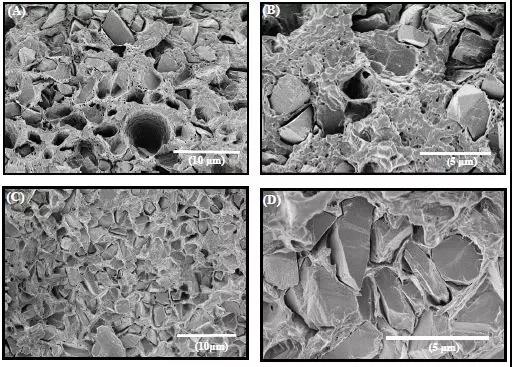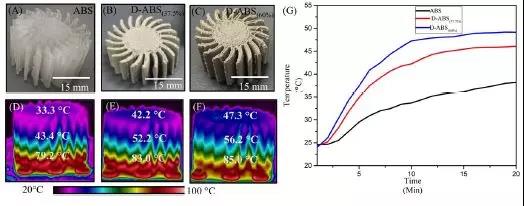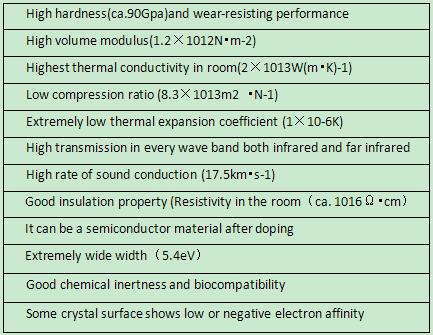Company tel:+86-379-63184520
Contact number:+86-15937921751
Postcode:471000
Email:info@yuxindiamond.com
Address:3-1-508 Luoyang National University Science Park, No. 2 Penglai Road, Jianxi District, Luoyang, China 471000
ACES Investigate Diamond-Laced ABS As Low-cost 3D Printer Material
Researchers at Australia’s ARC Centre of Excellence for Electromaterials Science(ACES)have published a study into the thermal performance of an ABS-diamond composite for 3D printers.The aim of the research is to broaden the selection of available materials for 3D printing,harnessing the unique properties of microdiamonds.
“These include its hydrophilicity,biocompatibility and non-toxicity,thermal stability,thermal conductivity,electrical insulation,(or indeed electrical conductivity in boron doped variants),hardness,wear resistance and low cost.”
Microdiamonds are forever…being 3D printed
First created in 1963,microdiamond,and its little sister nanodiamond,are still seeking widespread commercial application.
Due to their range of favorable properties,both materials are incredibly versatile,and have shown great potential as an additive to lubricants,engine oil and polishes.At RMIT University nanodiamond has also recently proven to increase the biocompatibilty of 3D printed medical implants.
Specifically,microdiamond’s hydrophilic and thermal strengths are the features that stand out in this latest study from ACES.

Diamond ABS:a five-fold improvement on ABS alone
In experimentation,a microdiamond powder was homogeneously and densely distributed through ABS at 37.5 or 60 wt%.For the 60 t%filament,the most successful in this study,this ratio translates to 40 g of microdiamond to 26.5 g of ABS.18
With this addition,the researchers report,“The thermal conductivity of the ABS base material increased from 0.17 to 0.94 W/(m•K),”this is“more than five-fold”the thermal conductivity of ABS alone.Further,“The elastic modulus for the 60 wt%microdiamond containing composite material increased by 41.9%with respect to pure ABS,from 1050 to 1490.”Hydrophilicity also demonstrated an increase by 32%.
Next,to 3D print diamond ABS,the team modified their desktop system(from Dutch company FELIXprinters)with titanium gears,which are more effective at resisting abrasion from composite particles.Heat sinks were then selected as an appropriate test object.
The potential for miniaturized electronics
According to results,“Heat dissipation measurements demonstrated that 3D printed heat sinks containing 60%(wt)diamond increased the thermal dissipation by 42%.”
Further,the researchers showed that any waste 3D prints made in this process were fully recyclable.After dissolving in acetone,pellets were formed and re-extruded as a filament.“Following this simple process,”the researchers stipulate,“it was noted that thermal conductivity was identical to the original filament,”though there was a 16%decrease in the elastic modulus.

Readily available from a variety of suppliers in China,it is also possible that microdiamond bought in high quantities could meet the low cost demands of this filament is developed commercially.
The paper concludes:“As electronics become smaller and more powerful,thermal management has become one of the key limiting factors in device performance this novel low cost micro-diamond containing ABS composite provides a potential practical solution,”
“In addition,its compatibility with FDM printing for production of complex geometries at lowcost could be of significant advantage in miniaturized and compact thermal management applications.”
Diamond,as one of the most special materials in natural world,is featured with the highest hardness,low friction coefficient,high elasticity modulus,high thermal conductivity,high insulation class,wide energy gap,great sound propagation rate and favorable chemical stability,which are presented in below Table.In spite of such unique features,the natural diamond has always been existed in the form of gem,with its variability and rareness sharply limiting its application.Luoyang Yuxin Diamond Co.,Ltd‘s CVD Diamond film,on the other hand,integrates such physical and chemical properties,with lower cost than natural diamond and applicable to be made into various shapes,thus enjoying extensive application prospect in electronic industry,optical field and mechanical industry.








